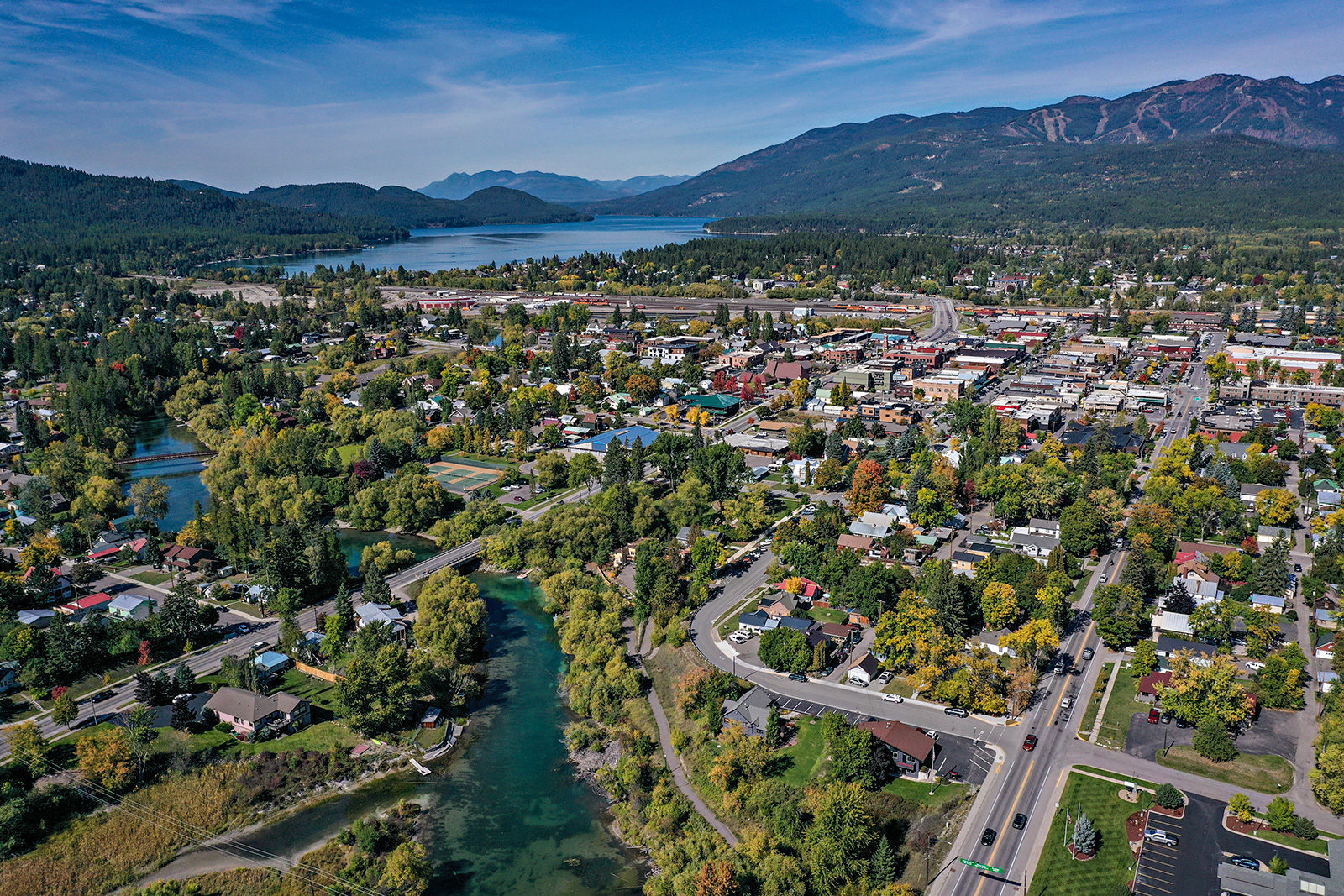Whitefish Adopts Zoning Rules to Allow Marijuana Dispensaries in City Limits
Council approves ordinance permitting adult-use recreational sales in downtown and secondary business districts; city’s first shops could begin opening in February 2022
By Tristan Scott
The Whitefish City Council last week adopted a zoning ordinance to allow recreational adult-use marijuana sales in its downtown and secondary business districts, unanimously approving a framework for pot dispensaries to begin opening storefronts and selling their products after the new year.
Council arrived at the final set of rules after careful deliberation, sending an earlier draft ordinance back to planners for revisions last month while acknowledging the urgent need to have a written ordinance in place before entrepreneurs begin queuing up with permit applications next month.
“I have a feeling that we’re going to have people sleeping outside our office,” said Dave Taylor, Whitefish’s director of Planning and Building, who noted that even with the relatively inclusive zoning language, there is a premium on available retail and manufacturing space.
Voters approved the use and sale of recreational marijuana in the November 2020 election and Gov. Greg Gianforte signed the “Montana Marijuana Regulation and Taxation Act,” or House Bill 701, this past May. The Department of Revenue will begin accepting license applications on Jan. 1, 2022. The city of Whitefish will likely see licensed medical marijuana providers intending to open recreational businesses as early as mid-February due to the month-long permitting process.
In 2009, Whitefish set a temporary moratorium on storefront dispensaries following a high volume of requests for medical marijuana businesses both locally and statewide. In 2012, it passed an ordinance banning medical marijuana dispensaries from operating storefront businesses in the city limits.
The ordinance that Whitefish City Council ultimately adopted last week was nearly identical to the provisions city planning officials recommended a month earlier; however, councilors added enhanced 500-foot buffers that must separate marijuana dispensaries along the town’s outer arterials.
Much of the debate at a Dec. 6 council meeting centered on whether to allow storefront dispensaries in Whitefish’s secondary business district, which stretches along Spokane Avenue/U.S. Highway 93 from the southern edge of downtown at East Sixth Street to the intersection at Highway 40. Even though the conditional uses of this WB-2 district include light assembly and manufacturing, which require an administrative conditional use permit (CUP), some council members expressed concern that the allowance would create the appearance of a “green mile” at the southern entrance to Whitefish.
“I don’t think the citizens want to drive in on the strip south of town and drive past seven pot shops,” Councilor Steve Qunell said. “I want to make sure that we don’t have that.”
In addition to the city’s existing sign ordinance and other planning tools, officials adopted rigorous standards and development requirements as part of the new ordinance to address Qunell’s concerns. Although the council stopped short of requiring a full CUP, its members agreed that an administrative CUP still allows for adequate oversight without having to vet every application through planning board and council hearings, which are time consuming and would add “significant staff workload and further crowd busy agendas this winter as we have a number of these businesses waiting to apply,” Taylor said.
“Staff is confident that we can adequately review such facilities administratively, and we can also elevate permit applications that have issues or significant opposition to hearings before the Planning Board and the City Council when necessary,” according to Taylor’s Dec. 6 staff report from the Whitefish Planning Department.
While the WB-2 is generally intended for retail sales or services that require large display or parking areas, there are also building or garden supply stores, convenience stores, and farm supplies that may specialize in selling smaller retail items that wouldn’t necessarily need huge buildings, parking lots, or display areas.
Taylor said the secondary business district has the most available vacant commercial properties in the city, including “vacant and dilapidated” buildings that will benefit from the refurbishment, as potential purveyors of recreational pot have already shown a high degree of interest in the district.
“Adding cannabis sales to the WB-2 would not be completely out of character with the intent of the district. There are also a number of smaller vacant or for sale buildings in the WB-2 that have either been run down or empty that staff is aware of interest in for this proposed new use that would potentially repurpose and upgrade them and bring reinvestment,” Taylor stated in his report. “The mostly empty former Mountain Mall would also seem like a reasonable place for such businesses.”
Banning dispensaries in the secondary business district could also cause many to locate just outside of city limits on commercial property to the south, thus removing the tax benefits to the city, officials said. Removing the WB-2 zone from the possible conditionally permitted zones for marijuana dispensaries will also put a premium on the few available locations downtown.
In the city center, a WB-3 zoning district allows for general retail uses that business leaders have been fiercely protective over as they strive to maintain Whitefish’s quaint and compact downtown area. Although there was some concern that allowing dispensaries to operate in the city’s secondary business district would detract from the downtown retail district, others noted that state law requires dispensaries to be 500 feet away from schools and churches, eliminating nearly all of downtown Whitefish.
“By eliminating the WB-2 zone, we would force everyone to go downtown,” Councilor Andy Feury said. “Steve is worried about a green mile. Well, I don’t want a green downtown, either. But that’s not going to happen. We put enough sidebars on everything that I am super comfortable with what we have done. We had a lot of work done by the planning board and we heard from everybody that what we have done is correct. This is not a business that is going to go away. It’s a business that is going to be here.”